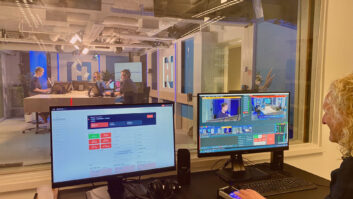Until HD Radio added high-quality supplemental program channels to a single FM frequency assignment, our new digital transmission platform didn’t really have a killer app. We now have HD Radio stations in various sizes of markets deploying a variety of new HD2 and HD3 format offerings, though to our tastes, not nearly enough of them, and not nearly different enough from radio’s traditional offerings.
IBiquity CEO Bob Struble recently mused about the burgeoning opportunity in his online commentary. Struble says multicasting allows radio to address the “Long Tail” effect in digital media, a phenomenon espoused by Wired magazine’s Chris Anderson and explored previously in these pages by RW’s Skip Pizzi.
For Struble, analog radio is challenged by the long tail because it cannot effectively serve the relatively few consumers who prefer reggae, death metal, comedy or mommy talk: “You simply cannot program niche formats on analog stations and make the numbers work — listenership and revenue potential are too low to cover capital and operating costs,” he says. HD Radio multicasting, he feels, is the answer.
New niche formats appealing to smaller, targeted and loyal audiences can push radio’s reach farther out from the main body of mass-appeal standard fare.
A lot of the new “secret stations between stations” are merely simple automated jukebox formats with short liners and IDs but there is a growing stable of exceptions that feature programmed unique content. RW was first to report on many of these, and one such station — WHUR-HD2 in Washington — earned the second annual NAB HD Radio Multicast Award this fall.
Radio station employees who are creating and maintaining these formats have been enjoying the fruits of their labor on both HD Radios and their Internet streaming versions. Most large markets now have a decent selection of HD2 and a few HD3 stations; and the public is going to start taking notice.
The HD Digital Radio Alliance recently told its members they could start airing commercials on supplemental channels, ending a voluntary self-imposed ban. This has encouraged another trend of note: simulcasts of news-talk AM content on FM HD3 channels in New York and other cities. Expect that lead to be followed. HD Radio service in many locales can offer a useful and noticeable improvement over noisy, low-fi AM reception. This can also augment and extend coverage, especially at night.
In areas where decent HD penetration and lack of obstructions allow relatively consistent performance, the new supplemental stations are becoming a primary driver for consumer interest in HD Radio. Most folks attracted to the new offerings find them first on Web site links and then realize that buying an HD Radio will extend coverage to the car.
Smart stations picking up on this are cross-promoting the newfound HD Radio advantages on their sites and main on-air programming.
HD Radio is off to a slow but steady start and we think it is about to pick up momentum. The anticipated digital power boost will allow HD to gain traction more rapidly. This will achieve more consistent performance, critical to HD2 and HD3 success, and in turn drive higher rates of adoption and market penetration.
As more clusters light up supplemental FM-HD channels, more of them likely will become home to a sister AM station’s programming. This might be seen as an easier and cheaper path to upgrading AM to an alternate form of digital than adding AM-HD. It is not inconceivable that a big chunk of AM offerings will be found on HD2 and HD3 channels, eventually rendering moot the need to maintain some marginal and aging AM facilities.
Even with the recession and staff cutbacks, savvy station programmers and managers should seize the early opportunity to develop compelling HD2 and HD3 format choices beyond just AM simulcasts. Those who do this reasonably well will have a big leg up when the economy returns to something like normal.
— Radio World










